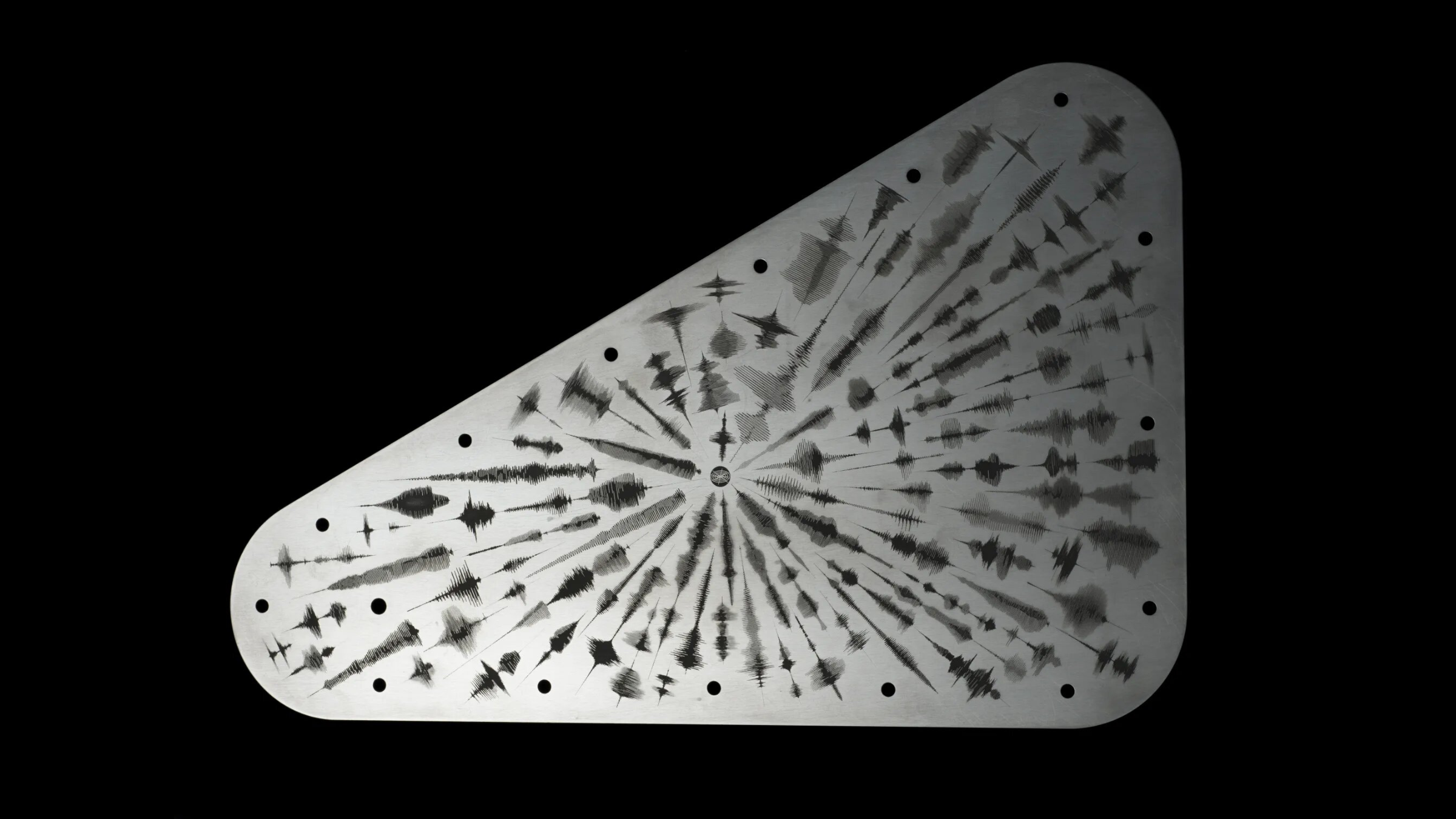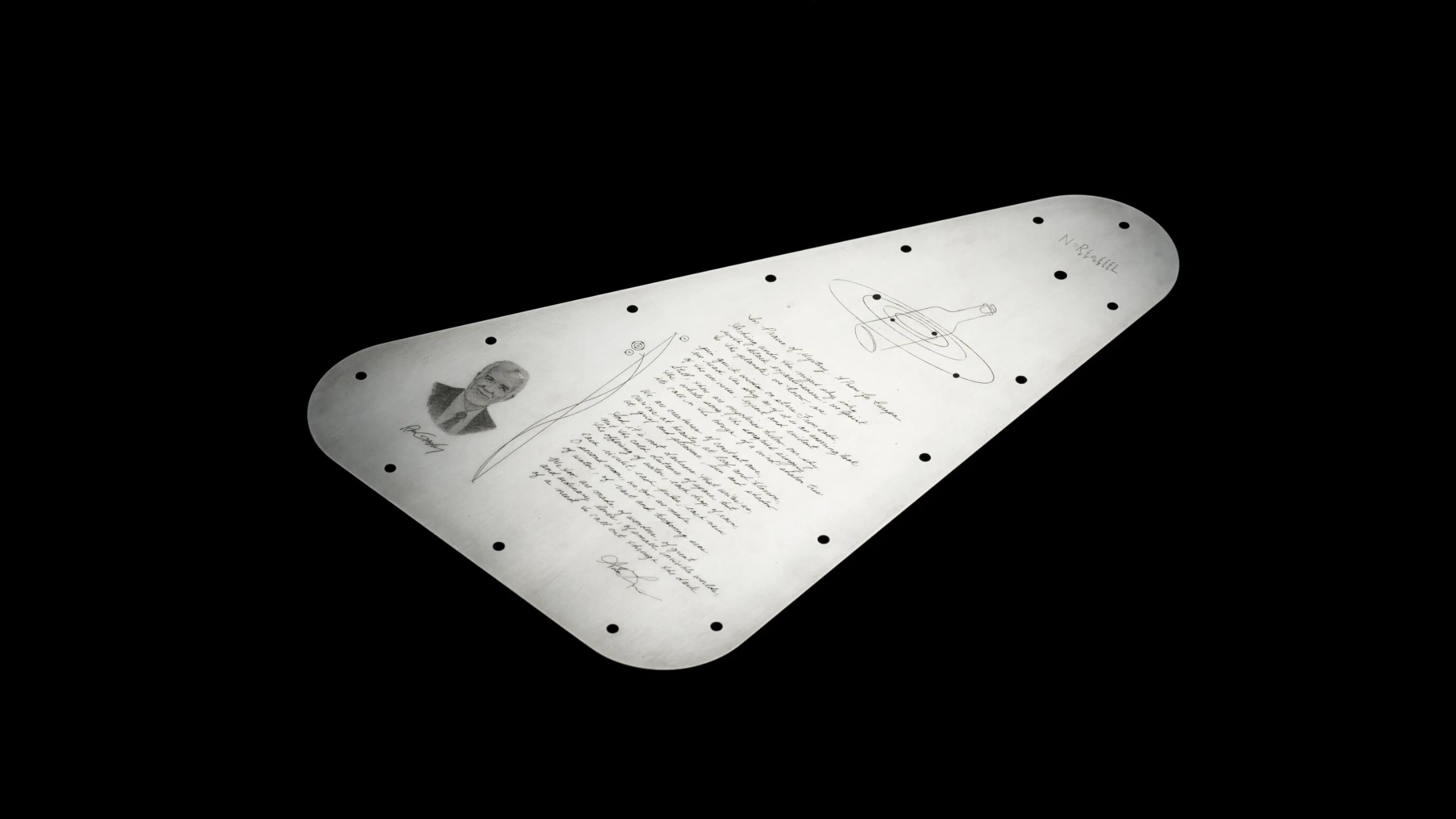NASA unveils cryptic message from Earth to be sent to Jupiter's icy ocean moon Europa
From a poem written by a U.S. Poet Laureate to millions of stenciled names, NASA's Clipper spacecraft's trip to Europa will be marked with a human touch.

NASA has unveiled a cryptic human message it will be shipping off in its latest mission to Jupiter's icy ocean moon, Europa.
In 2023, the space agency launched a campaign called "Message in a Bottle," asking millions of members of the public to sign their names to a message that would be sent across the solar system onboard the Europa Clipper spacecraft. The launch is scheduled to take place in October 2024 and is part of a mission that aims to explore whether areas under Europa's frozen surface could support life.
In a statement released March 8, NASA has now revealed how these names will be carried into space. More than 2.6 million names have been stenciled into a "dime-size" silicon microchip by technicians at the Microdevices Laboratory at NASA's Jet Propulsion Laboratory. This microchip will be attached to a commemorative plate, which will feature a handwritten copy of the poem "In Praise of Mystery: A Poem for Europa" by U.S. Poet Laureate Ada Limón, among other design details.
The plate, which is around 7 by 11 inches (18 by 28 centimeters) in area and made of the metal tantalum, will be decorated on both sides with artwork that "highlights Earth's connection to Europa," NASA said in the statement. If any life is found on Europa, it is likely to be microbial, so the commemorative plate is more of a symbolic gesture than a bona fide message to extraterrestrial life forms, per se.
Related: Missions to the moon, Mars, Jupiter and more: These are the coolest space missions in 2024
"The content and design of Europa Clipper's vault plate are swimming with meaning," Lori Glaze, director of the Planetary Science Division at NASA, said in the statement.
"The plate combines the best humanity has to offer across the universe — science, technology, education, art, and math. The message of connection through water, essential for all forms of life as we know it, perfectly illustrates Earth's tie to this mysterious ocean world we are setting out to explore."
Sign up for the Live Science daily newsletter now
Get the world’s most fascinating discoveries delivered straight to your inbox.
The intricate features of the plate's design pay homage to this scientific pursuit and to the links between Earth and Europa. The outward facing panel, for instance, contains waveforms, meaning visual representations of sound waves, derived from recordings of people saying the word "water" in 103 languages. The plate's inward-facing side features visual references to the radio frequencies that could be used to conduct interstellar communication.

"We've packed a lot of thought and inspiration into this plate design, as we have into this mission itself," Robert Pappalardo, a project scientist at NASA's Jet Propulsion Laboratory, said in the statement. "It's been a decades-long journey, and we can't wait to see what Europa Clipper shows us at this water world."
After a 1.8 billion-mile journey through space, Clipper is expected to begin orbiting Jupiter in 2030. From there, it is expected to make around 49 close flybys of Europa. Scientists hope that they'll be able to use the mission to gather data on the subsurface of Europa's ocean, which contains twice the amount of water as of all of Earth's oceans, as well as data from the moon's icy crust, thin atmosphere and space environment.
The moon has long been considered one of the most promising candidates in the search for extraterrestrial life — however, newly published data from NASA's Juno mission suggests Europa may lack sufficient oxygen to harbor life, somewhat dashing these hopes. The Europa Clipper's upcoming observations will help settle this question.

Emily is a health news writer based in London, United Kingdom. She holds a bachelor's degree in biology from Durham University and a master's degree in clinical and therapeutic neuroscience from Oxford University. She has worked in science communication, medical writing and as a local news reporter while undertaking NCTJ journalism training with News Associates. In 2018, she was named one of MHP Communications' 30 journalists to watch under 30. (emily.cooke@futurenet.com)











